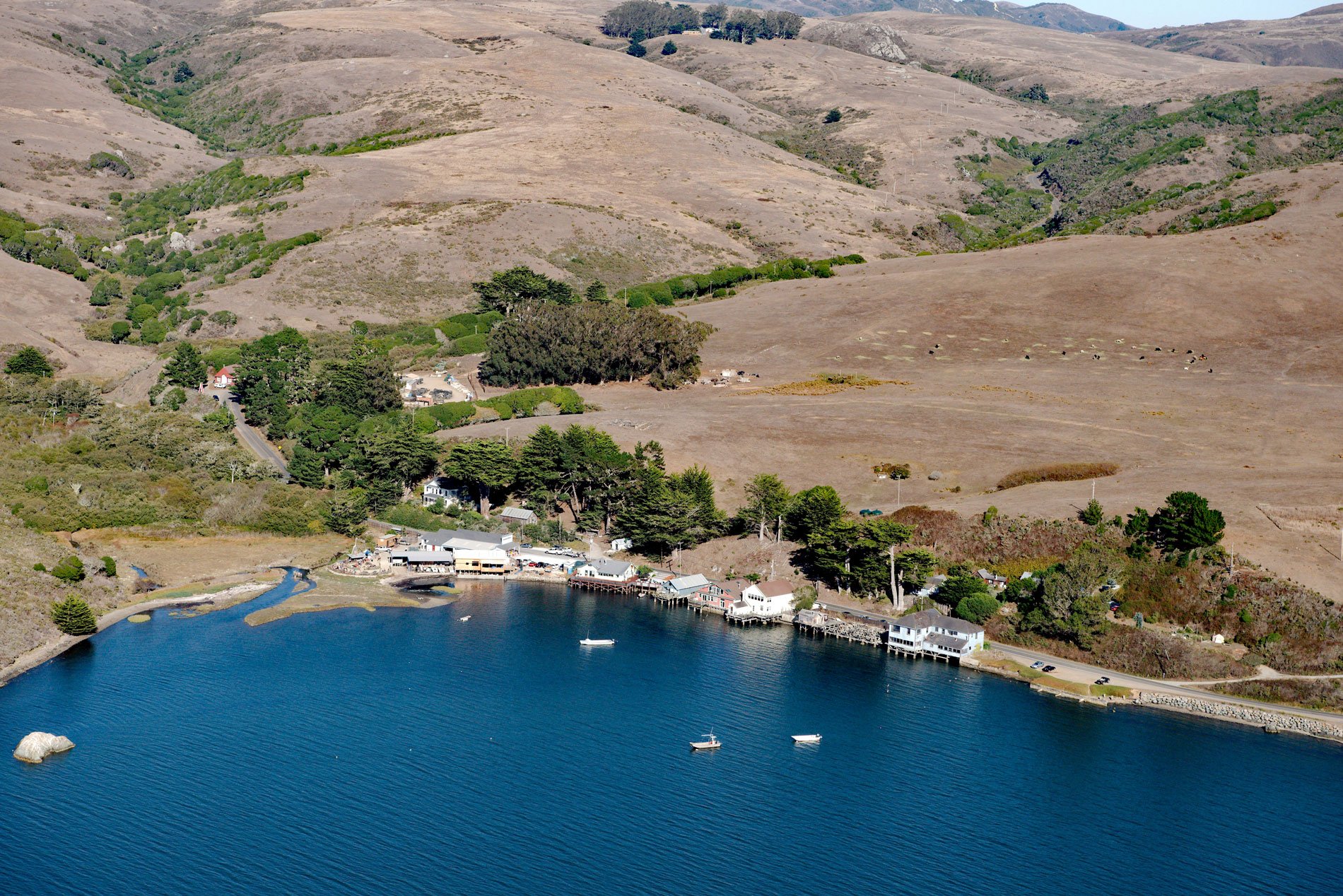Marshall is on the northeast shore of Tomales Bay, about 15 miles (24 km) southeast of Bodega Bay and 6 miles (9.7 km) south of Tomales, California. The town is named after the Marshall brothers who established a dairying industry in the 1850s. Starting in the 1870s, Marshall was a stop on the North Pacific Coast Railroad connecting Cazadero to the Sausalito ferry that crossed San Francisco Bay. Today, there is still some dairy farming in the area, but the main industry is in oysters and clams.
The Marshall brothers were Irish immigrants who settled on a ranch with 1,125 acres (455 ha), 3 miles (5 km) southeast of Tomales. The Marshall Brothers drove a herd of beef cattle from Kentucky to their eastern Tomales Bay ranch in 1853 and 1854. They built a wharf and warehouse on the bay’s shore, and their site became a shipping point for nearby ranchers and farmers. By the early 1870s, the small town of Marshall included a store, hotel, and post office. The dairy ranches replaced beef as the primary endeavor of farmers east of Tomales Bay. The Marshall Brothers also operated a dairy, raised horses, and grew potatoes and wheat. In 1874, a railroad was planned to connect Sausalito (connected to San Francisco by ferry) to the redwood forests and sawmills of the Russian River. Point Reyes landowners and North Coast Railroad investors James McMillan Shafter and Charles Howard convinced railroad directors to route the tracks along Tomales Bay. The Marshall Brothers offered a $10,000 subsidy to encourage the train to stop at their waterfront settlement.
In 1907, the Pacific Coast Oyster Company planted 450 acres (182 ha) of eastern oysters (Crassostrea virginica) in Tomales Bay at Bivalve, a railroad stop opened exclusively for the company on the bay’s southeastern shore. The train carried potatoes from Tomales, clams, and oysters from Marshall and Bivalve, herring from Hamlet, and hay, grain, and milk from the entire area to merchants, wholesalers, and consumers in San Francisco. The narrow gauge North Pacific Coast Railroad from Sausalito was dismantled in 1930. Oyster farming is still a major industry on the bay. The two largest producers are Hog Island Oyster Company and Tomales Bay Oyster Company in Marshall, both of which retail oysters to the public and have picnic grounds on the east shore. Read more here and here. Explore more of Marshall here:

